
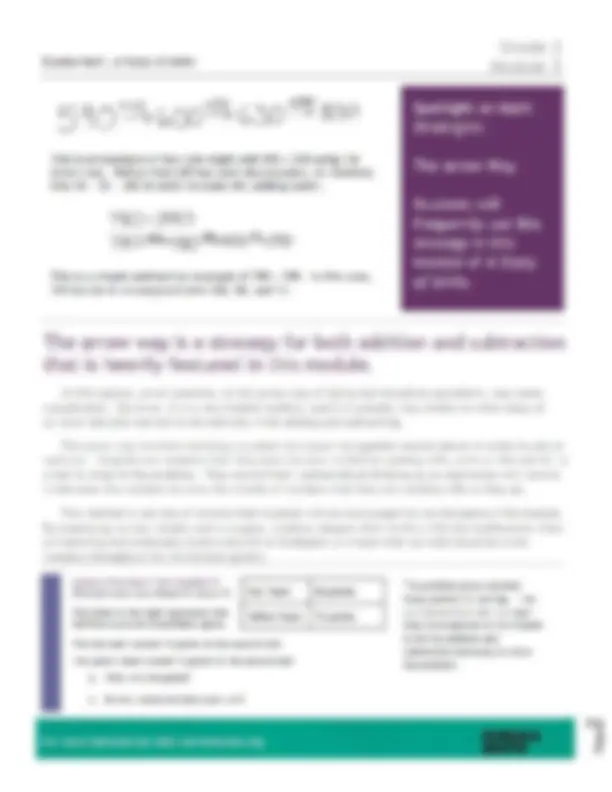
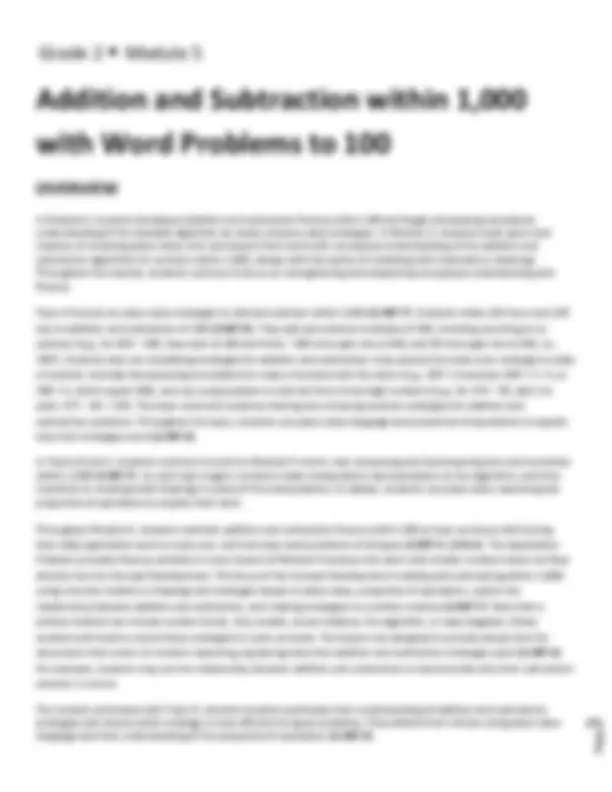
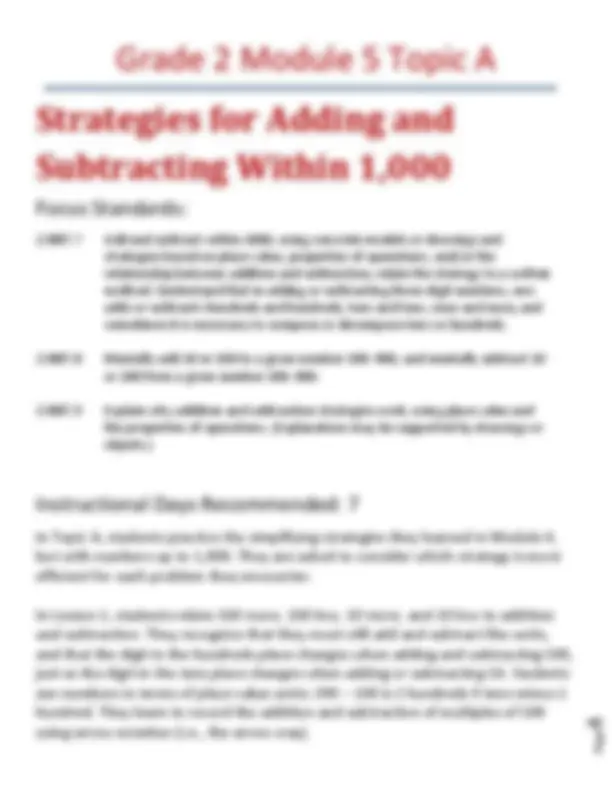
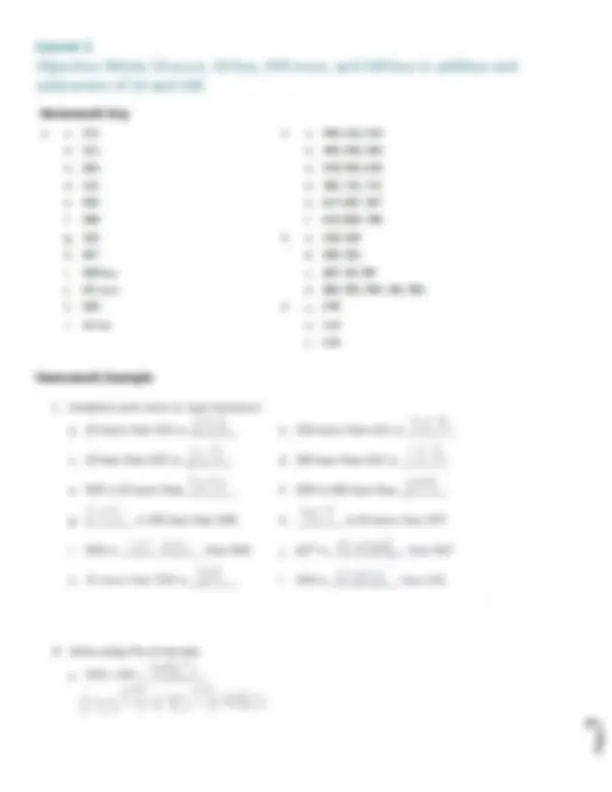
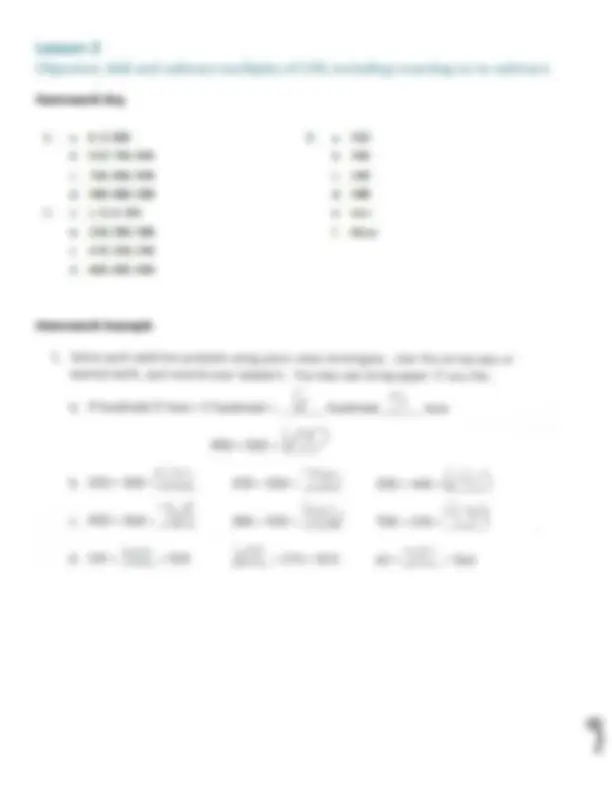
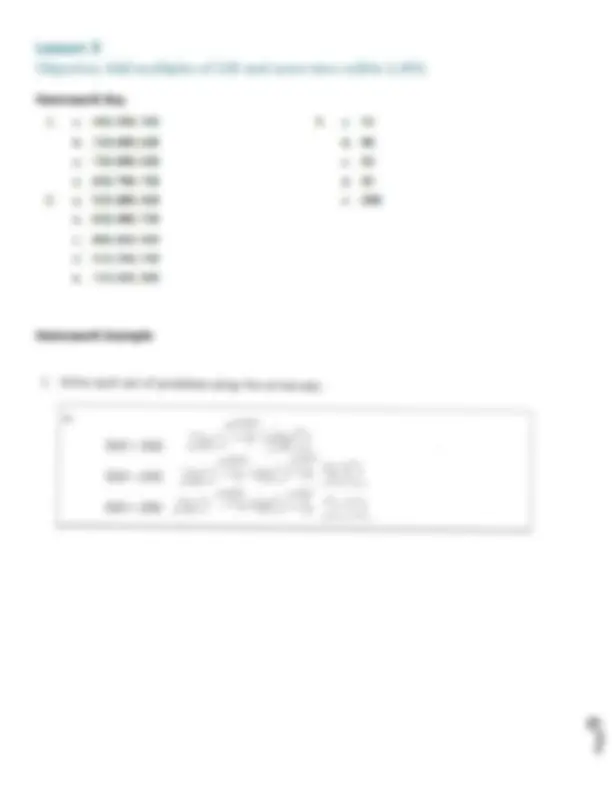
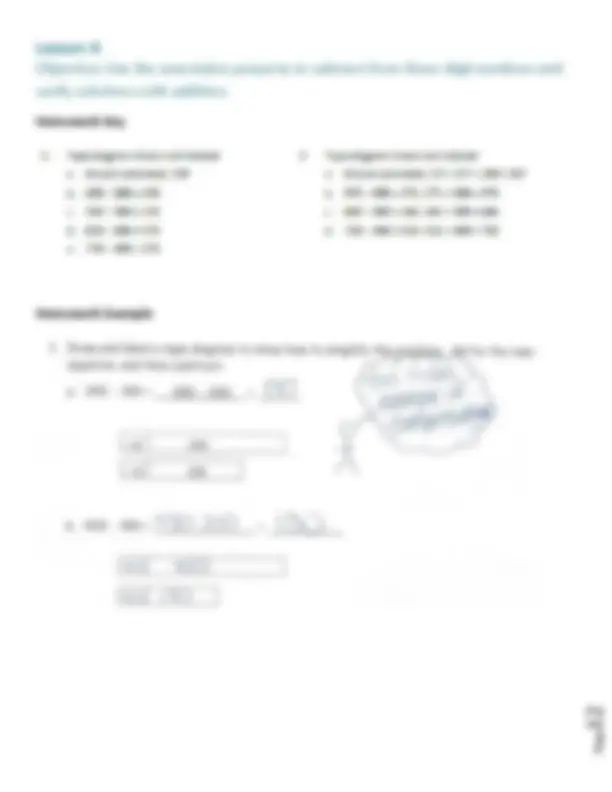
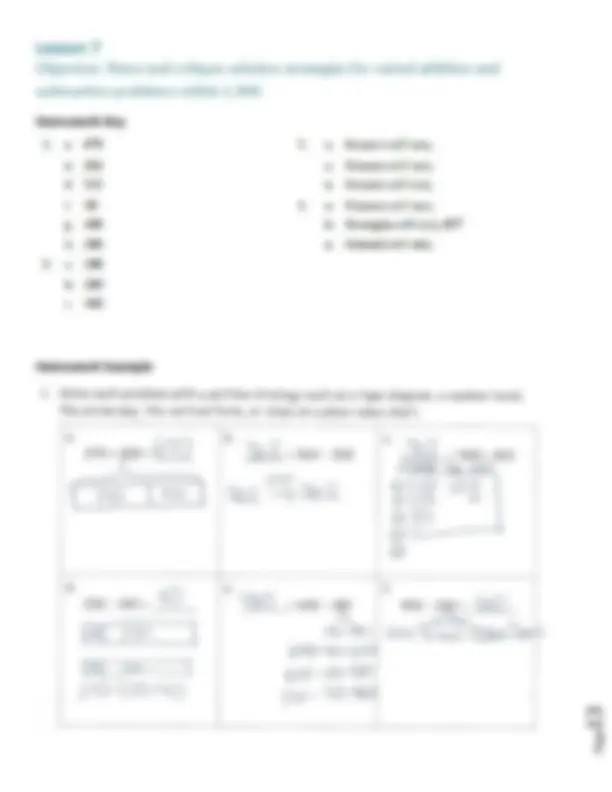
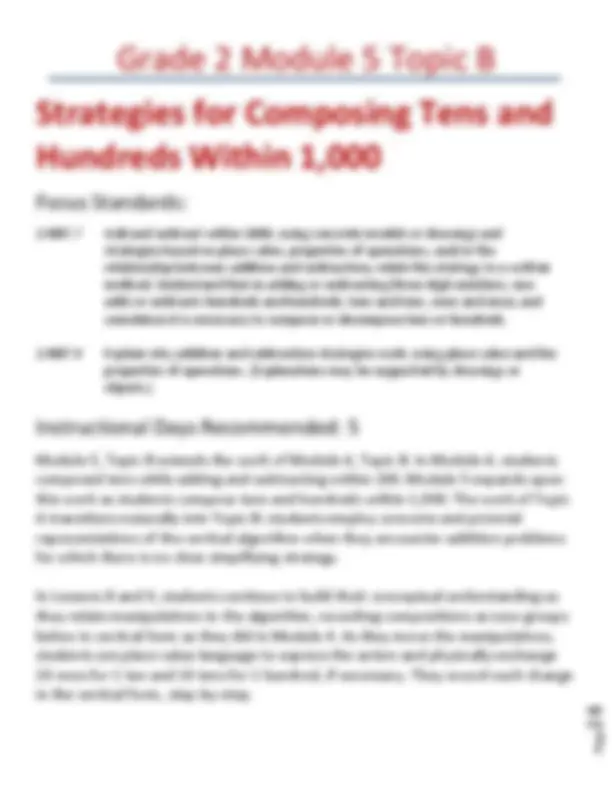
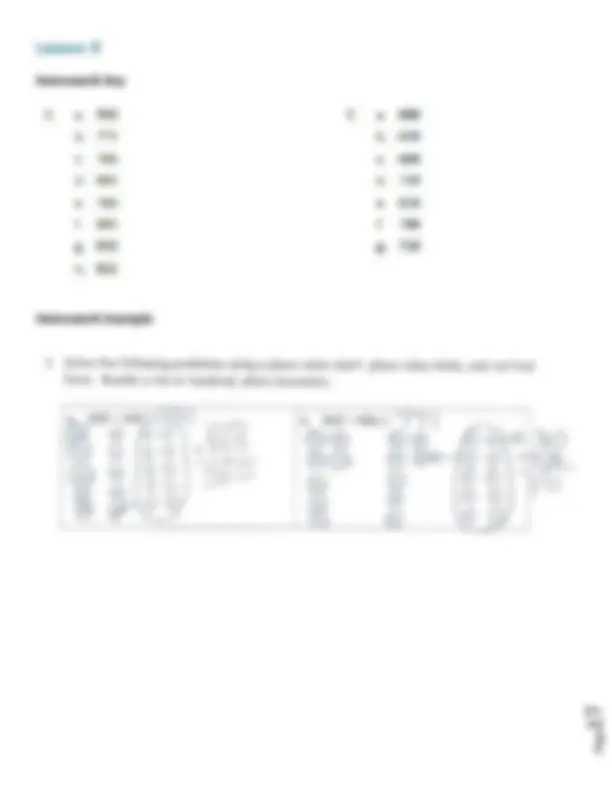
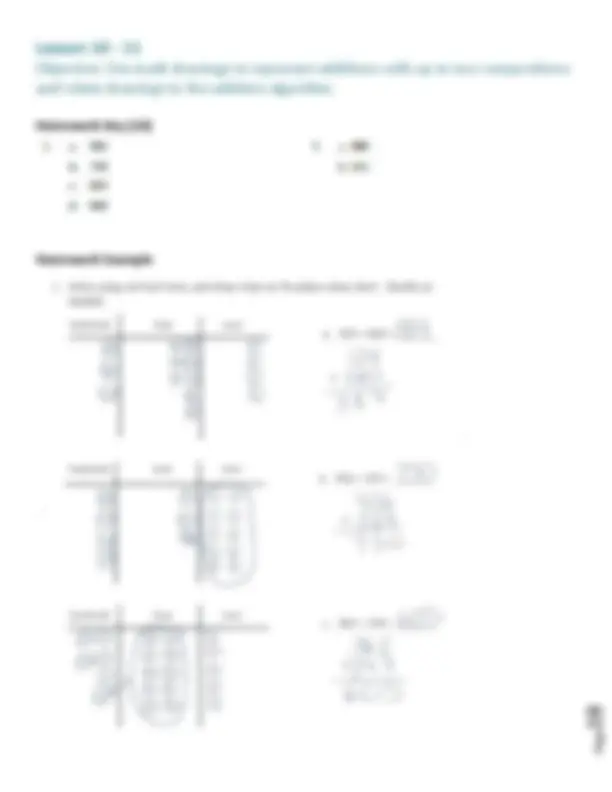
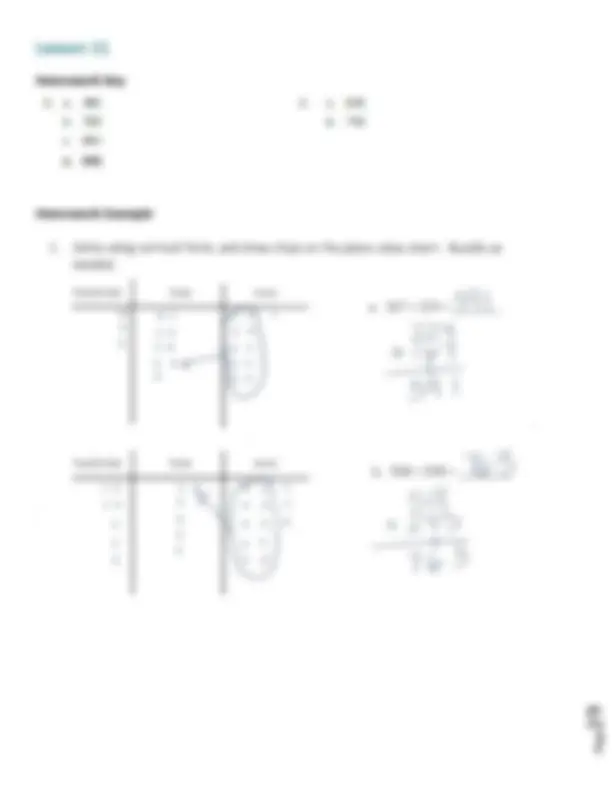
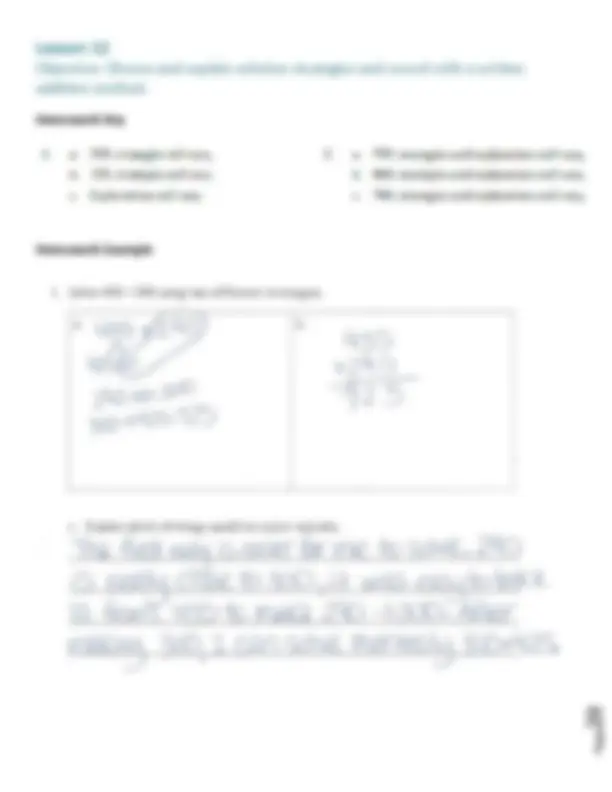
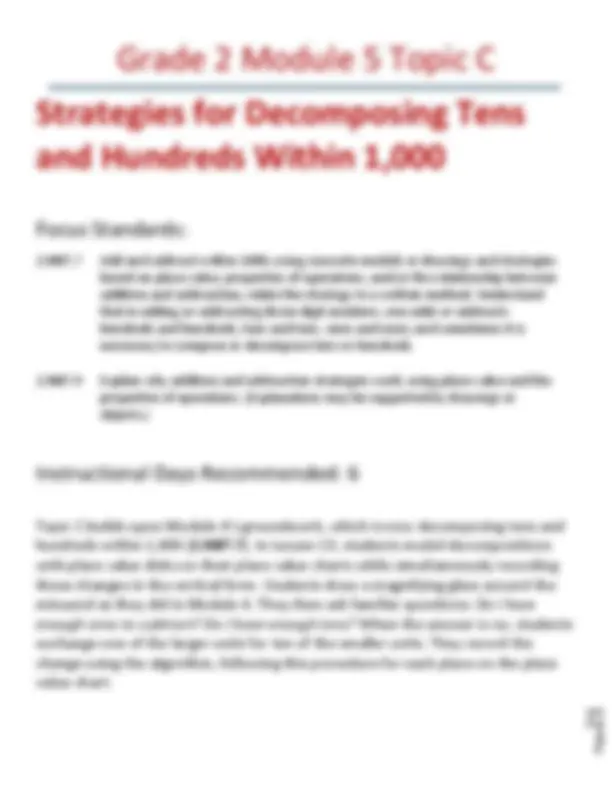
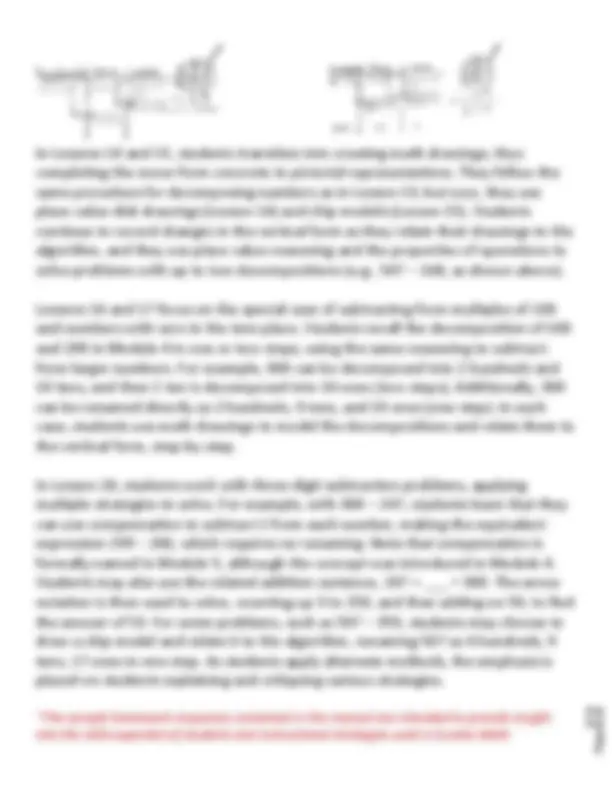
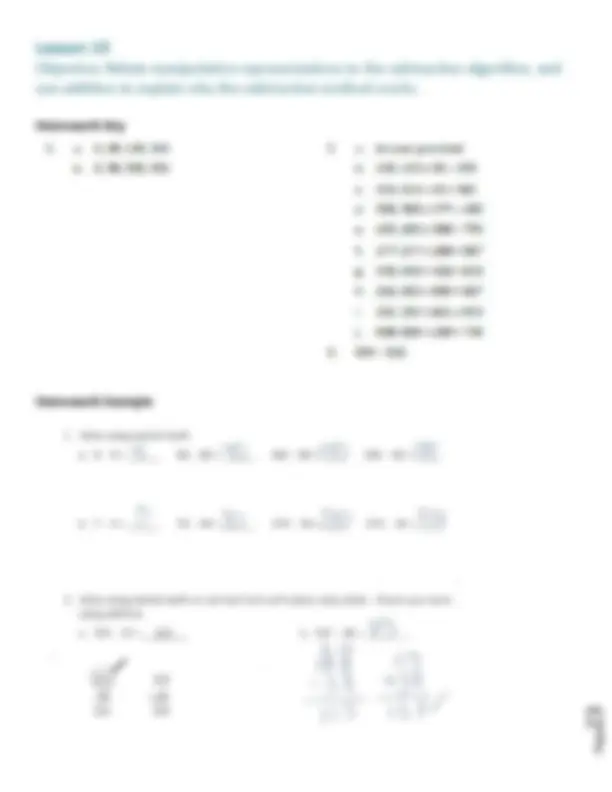
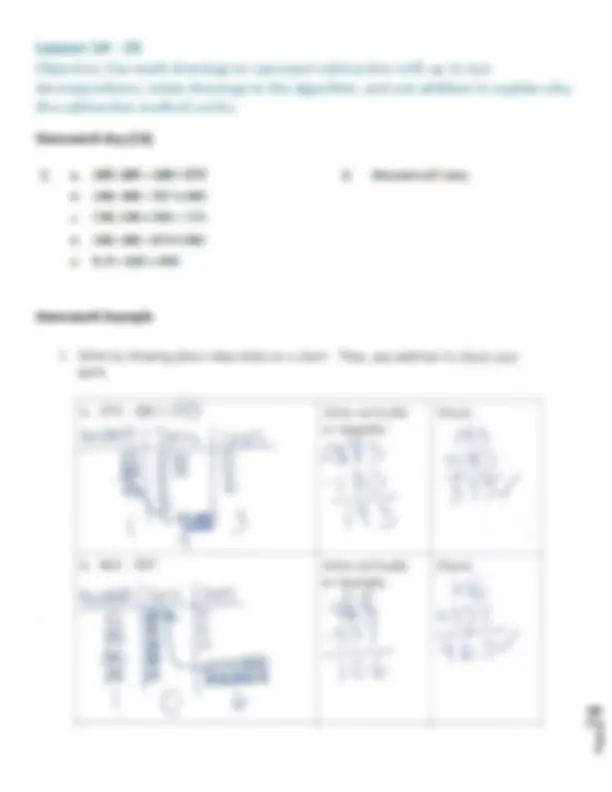
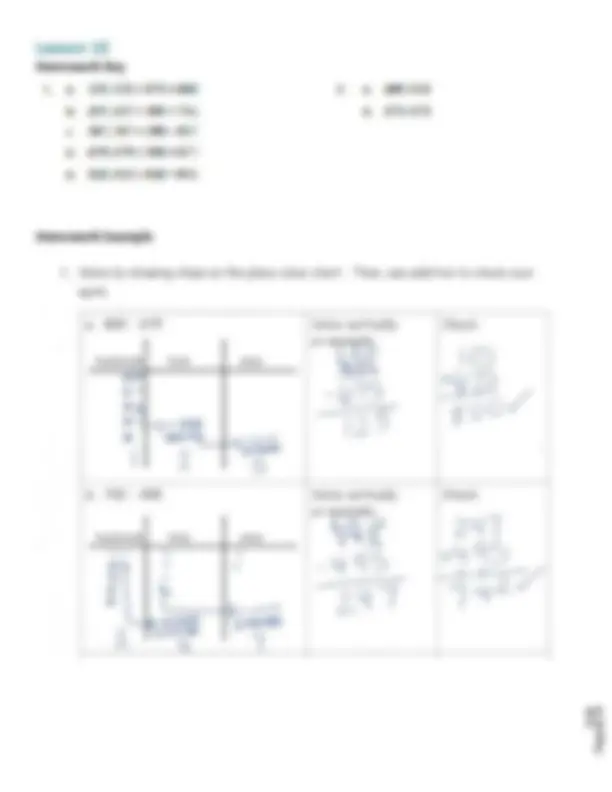
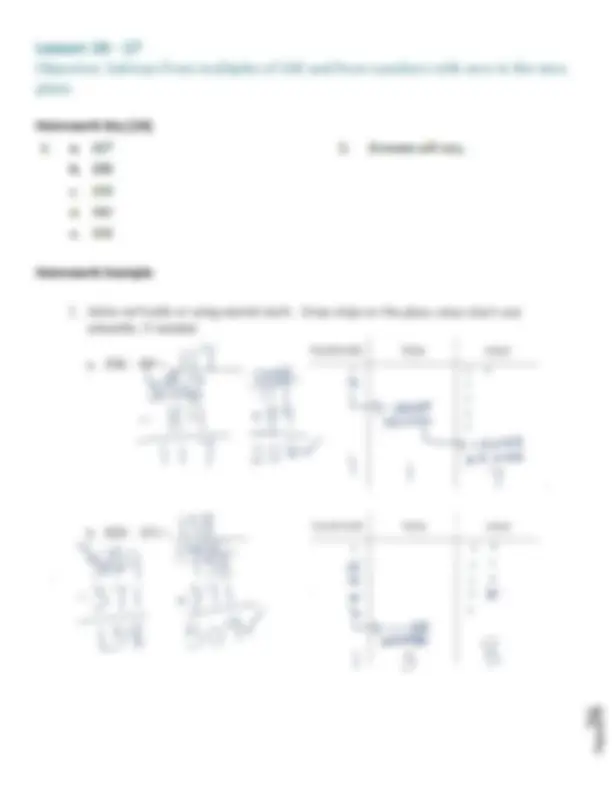
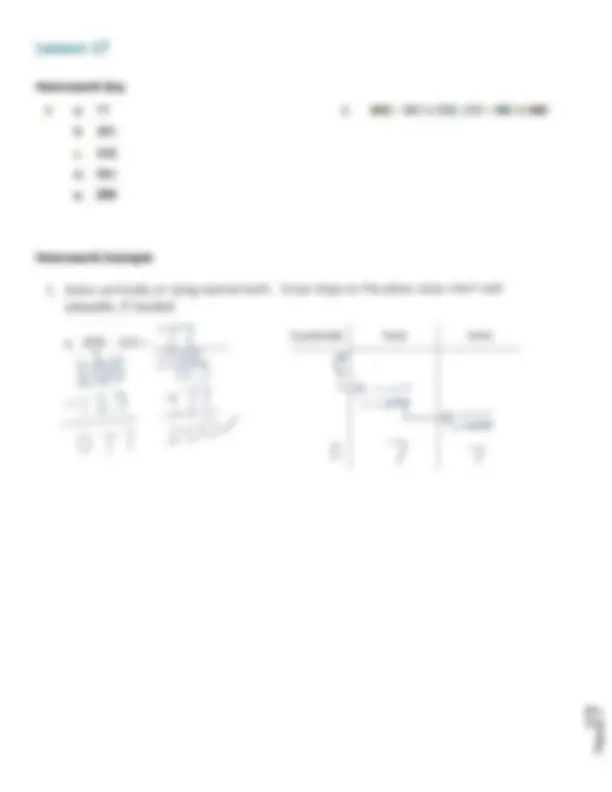
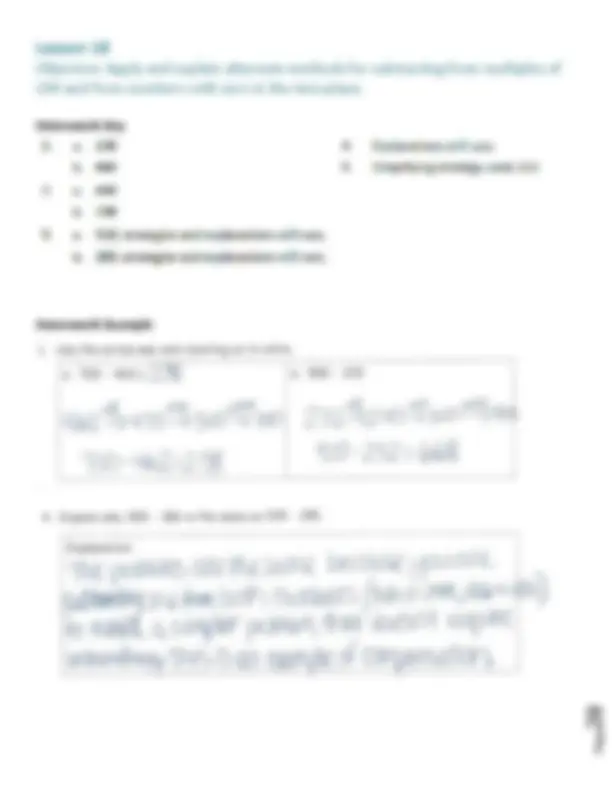
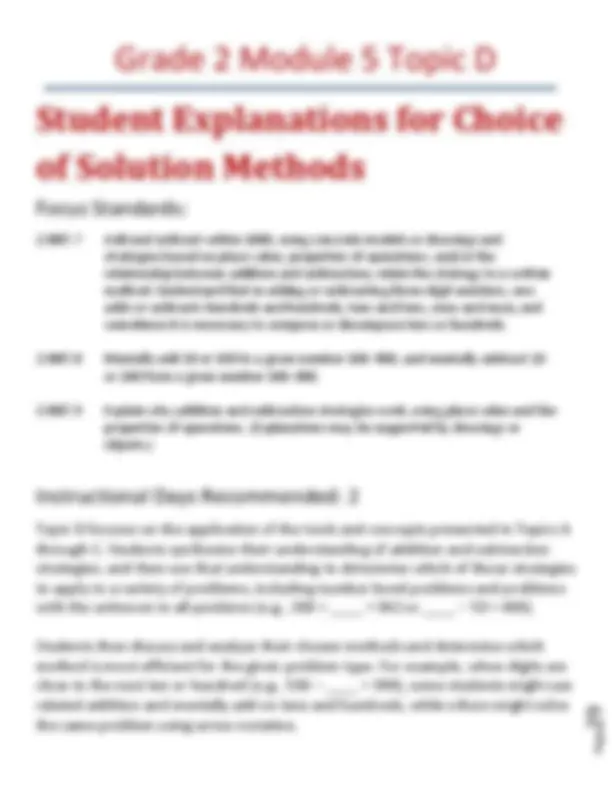

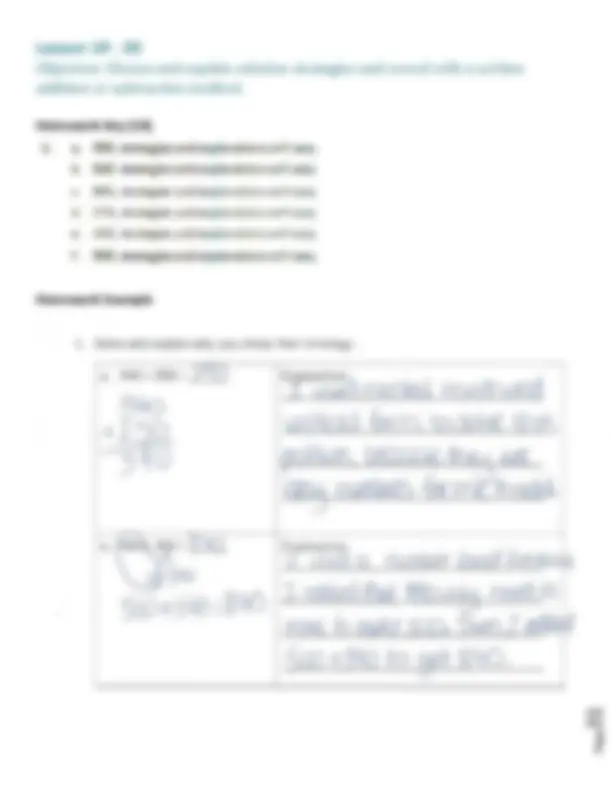
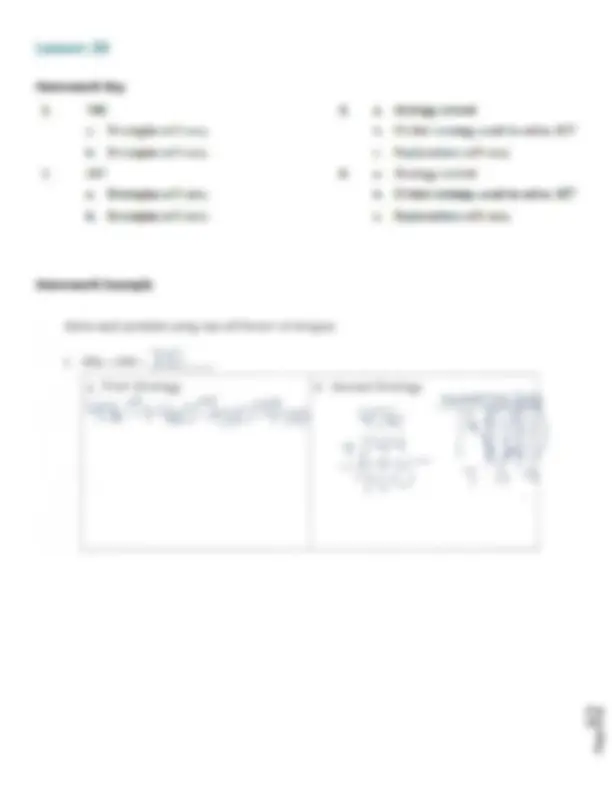


Study with the several resources on Docsity

Earn points by helping other students or get them with a premium plan


Prepare for your exams
Study with the several resources on Docsity

Earn points to download
Earn points by helping other students or get them with a premium plan
Community
Ask the community for help and clear up your study doubts
Discover the best universities in your country according to Docsity users
Free resources
Download our free guides on studying techniques, anxiety management strategies, and thesis advice from Docsity tutors
Module 5 of Grade 2 mathematics, focusing on addition and subtraction strategies within 1,000. Students build upon their mastery of place value strategies and extend their work to numbers within 1,000. Topics A, B, and C cover place value strategies for addition and subtraction, composing and decomposing tens and hundreds, and using number bonds, respectively. Students use concrete models, drawings, and strategies based on place value and properties of operations to explain their work.
What you will learn
Typology: Study notes
1 / 33

This page cannot be seen from the preview
Don't miss anything!


























We educate, prepare, and inspire all students to achieve their highest potential
Grade 2 Module 5
Parent Handbook
The materials contained within this packet have been taken from the Great Minds curriculum Eureka Math.
Grade 2 • Module 5
Addition and Subtraction within 1,
with Word Problems to 100
In Module 4, students developed addition and subtraction fluency within 100 and began developing conceptual understanding of the standard algorithm by means of place value strategies. In Module 5, students build upon their mastery of renaming place value units and extend their work with conceptual understanding of the addition and subtraction algorithms to numbers within 1,000, always with the option of modeling with materials or drawings. Throughout the module, students continue to focus on strengthening and deepening conceptual understanding and fluency.
Topic A focuses on place value strategies to add and subtract within 1,000 ( 2.NBT.7 ). Students relate 100 more and 100 less to addition and subtraction of 100 ( 2.NBT.8 ). They add and subtract multiples of 100, including counting on to subtract (e.g., for 650 – 300, they start at 300 and think, “300 more gets me to 600, and 50 more gets me to 650, so… 350”). Students also use simplifying strategies for addition and subtraction: they extend the make a ten strategy to make a hundred, mentally decomposing one addend to make a hundred with the other (e.g., 299 + 6 becomes 299 + 1 + 5, or 300 + 5, which equals 305), and use compensation to subtract from three-digit numbers (e.g., for 376 – 59, add 1 to each, 377 – 60 = 317). The topic ends with students sharing and critiquing solution strategies for addition and subtraction problems. Throughout the topic, students use place value language and properties of operations to explain why their strategies work ( 2.NBT.9 ).
In Topics B and C, students continue to build on Module 4’s work, now composing and decomposing tens and hundreds within 1,000 ( 2.NBT.7 ). As each topic begins, students relate manipulative representations to the algorithm, and then transition to creating math drawings in place of the manipulatives. As always, students use place value reasoning and properties of operations to explain their work.
Throughout Module 5, students maintain addition and subtraction fluency within 100 as they use these skills during their daily application work to solve one- and two-step word problems of all types ( 2.NBT.5 , 2.OA.1 ). The Application Problem precedes fluency activities in most lessons of Module 5 because this work with smaller numbers does not flow directly into the Concept Development. The focus of the Concept Development is adding and subtracting within 1,000: using concrete models or drawings and strategies based on place value, properties of operations, and/or the relationship between addition and subtraction, and relating strategies to a written method ( 2.NBT.7 ). Note that a written method can include number bonds, chip models, arrow notation, the algorithm, or tape diagrams. Many students will need to record these strategies to solve correctly. The lessons are designed to provide ample time for discussions that center on student reasoning, explaining why their addition and subtraction strategies work ( 2.NBT.9 ). For example, students may use the relationship between addition and subtraction to demonstrate why their subtraction solution is correct.
The module culminates with Topic D, wherein students synthesize their understanding of addition and subtraction strategies and choose which strategy is most efficient for given problems. They defend their choices using place value language and their understanding of the properties of operations ( 2.NBT.9 ).
2.NBT.7 Add and subtract within 1000, using concrete models or drawings and strategies based on place value, properties of operations, and/or the relationship between addition and subtraction; relate the strategy to a written method. Understand that in adding or subtracting three-digit numbers, one adds or subtracts hundreds and hundreds, tens and tens, ones and ones; and sometimes it is necessary to compose or decompose tens or hundreds.
2.NBT.8 Mentally add 10 or 100 to a given number 100–900, and mentally subtract 10 or 100 from a given number 100–900.
2.NBT.9 Explain why addition and subtraction strategies work, using place value and the properties of operations. (Explanations may be supported by drawings or objects.)
In Topic A, students practice the simplifying strategies they learned in Module 4, but with numbers up to 1,000. They are asked to consider which strategy is most efficient for each problem they encounter.
In Lesson 1, students relate 100 more, 100 less, 10 more, and 10 less to addition and subtraction. They recognize that they must still add and subtract like units, and that the digit in the hundreds place changes when adding and subtracting 100, just as the digit in the tens place changes when adding or subtracting 10. Students see numbers in terms of place value units: 290 – 100 is 2 hundreds 9 tens minus 1 hundred. They learn to record the addition and subtraction of multiples of 100 using arrow notation (i.e., the arrow way).
In Lesson 6, the ease of subtracting a multiple of 100 is highlighted again as students extend their work from Module 4 using compensation (i.e., the associative property) for subtraction. Students may add or subtract a multiple of 10 to make an equivalent problem that involves no renaming. For example, when subtracting 610 – 290, the same number, 10, can be added to both numbers to create a multiple of 100 (as shown below). Students also solve problems such as 451 – 195, adding 5 to both the minuend and subtrahend to make 456 – 200.
Topic A closes with Lesson 7, which provides students the opportunity to solidify their new skills. They confront a variety of problems, solve them, and then share their solution strategies. Through spirited discussion, students critique the work of their peers while deepening their understanding of various strategies.
The strategies taught in Topic A are designed to develop students’ conceptual understanding of addition and subtraction using models, drawings, properties of operations, and strategies based on place value. At the same time, students relate these strategies to written methods such as arrow notation and number bonds. This sets the stage for flexible thinking as students move into composing and decomposing units in Topics B and C.
*The sample homework responses contained in this manual are intended to provide insight into the skills expected of students and instructional strategies used in Eureka Math.
Lesson 1 Objective: Relate 10 more, 10 less, 100 more, and 100 less to addition and subtraction of 10 and 100.
Homework Key
Homework Example
Objective: Add multiples of 100 and some tens within 1,000.
Homework Key
Homework Example
Objective: Subtract multiples of 100 and some tens within 1,000.
Homework Key
Homework Example
Objective: Use the associative property to subtract from three-digit numbers and
verify solutions with addition.
Homework Key
Homework Example
Objective: Share and critique solution strategies for varied addition and
subtraction problems within 1,000.
Homework Key
Homework Example
In Lessons 10 and 11, students move from concrete to pictorial representations as they draw chip models to represent addition within 1,000. As they did with the manipulatives, students record each action in their drawings step-by-step on the vertical form (pictured to the below).
In Lesson 12, students are presented with a variety of problems for which they must choose an appropriate strategy to solve. Students are encouraged to be flexible in their thinking and defend their reasoning using place value language. They may choose to represent and solve problems using number bonds, the arrow way, place value disks, or chip models.
*The sample homework responses contained in this manual are intended to provide insight into the skills expected of students and instructional strategies used in Eureka Math.
Objective: Relate manipulative representations to the addition algorithm.
Homework Key (8)
Homework Example
Objective: Use math drawings to represent additions with up to two compositions and relate drawings to the addition algorithm.
Homework Key (10)
Homework Example
Homework Key
Homework Example